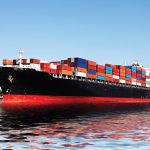When does a stagnant economy help?

When you are a bus operator…
While the South African economy navigates the doldrums that have characterised 2017, the global economy continues on the path to recovery. Growing momentum in the United States (US) and China and a continued recovery in the European Union all point to a global economy recovering from the depressive effects of the last decade.
At a time when many sectors in the domestic economy remain bogged down by weak consumer and business confidence stemming from political headwinds, the transportation industry would do well to consider the performance of another sector in which a tremendous upside remains – the tourism industry.
In the latest figures published on the tourism industry by Statistics South Africa, we find that over the past few years one of the largest growing segments in the domestic tourism market comes from the Far East, and, in particular, China.
A deeper dive reveals a number of interesting trends. The largest region for tourist arrivals remains Africa, and particularly our direct neighbours, who typically enter the country to visit friends and relatives, while also crossing the border to do grocery shopping in towns such as Musina and Nelspruit.
However, in countries without a common shared language (Germany, China and Japan), packaged tours remain the most popular method of seeing the country. The latest survey, shows that operated tour groups constituted around
30 percent of all outbound leisure trips from China in 2008, with this ratio expected to have grown since.
This ratio is even higher in the case of Japan, at 42 percent of all outbound leisure trips, while in Germany this method remains the third-most popular for outbound tourism at 16,9 percent. Recent reports suggest that demand for German-speaking tour guides in South Africa has far outstripped supply.
The spatial distance separating many of our attractions – the distance between Sandton (for shopping) and Soweto (for a cultural experience) or the distance between the centre of Cape Town and the winelands – and the absence of integrated transport nodes, mean that bus travel is set to remain the most attractive option for at least the next decade.
The continued attractiveness of the rand against major developed currencies will continue to spur on demand. A warm climate, natural attractions and favourable exchange rate present a supreme upside for the tourism outlook in the country.
The bus industry would be well advised to take advantage of the greater demand for new experiences from emerging middle-class travellers from new regions such as China, while established markets in the US and United Kingdom continue to make use of package tours.
Across all segments of the vehicle industry in South Africa, headwinds facing domestic macroeconomic indicators continue to depress demand. The tourism industry remains a shining light to the economic outlook, and bus manufacturers should jump at this opportunity.
Published by
Sam Rolland
focusmagsa




